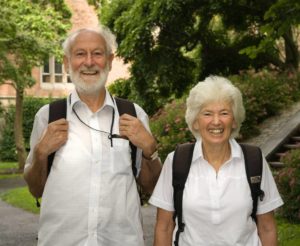Darwin Day 2020
The Ecology & Evolutionary Biology Program at Texas A&M University presents
Darwin Day 2020
Friday, February 14th, 5-8 pm
Veterinary Medicine Building 1
660 Raymond Stotzer Parkway, College Station
An annual celebration of all things biology
Free and open to all
Welcome to the annual Darwin Day event, 2020 Edition. Darwin Day is a celebration of all things biology. For the past few years, we organize this event to coincide with the birthday of Charles Darwin, the father of evolutionary biology, and preeminent thinker whose insights on the natural world lead to new discoveries to this day. The Texas A&M Ecology and Evolutionary Biology program enjoys the good fortune of a diversity of biologists – who study everything from Anthozoans to Zooplankton. These researchers are driven by a fascination for the natural world, and their discoveries help propel science forward. Come and explore our Darwin Day event to see how TAMU researchers and their science is illuminating fundamental aspects of biology, and making a difference in the real world.
Activities
Interactive Booths
Modern biology is truly bewildering in its reach. Visitors at the Darwin Day event can experience a slice of the breadth of research at Texas A&M – with themes ranging from biodiversity, natural selection and domestication, to paleontology, molecular biology, and genetics.. These booths are presented by TAMU faculty, students, and staff who will showcase their research to the public, so please stop by as many booths as possible and find out how their research is impacting the world.
Kids Art Contest (onsite)
The theme for the kids art contest this year is “Who’s your animal valentine?”. You can create and submit your artwork drawing, sketching, coloring, or crafting your favorite life forms. All raw materials will be provided on site. Kids of all ages welcome
Grown-up Art Contest details: ‘Endless Forms’
For Darwin Day 2020, we invite you to express what excites you about biology, or how you feel connected to the life and work of Charles Darwin, or simply showcase your nature-related artwork. Entries are open to all age groups, and those from young, budding naturalists are particularly welcome and encouraged.
Specifications: Art work you plan to submit can be illustrations, paintings, photographs, origami, 3D pop-outs, or any other craft that can be stuck onto an exhibit board or wall (with pins or tape). Size of paper (or spatial footprint) may be anything in the range of an A4 size sheet but not to exceed the size of construction paper (12”x18”). Art will be judged both by a panel. if your art is going to be larger in size, or non-conforming in other ways, please email eeb.events@tamu.edu to let us know what your requirements are.
Tree of Life Game
A game for children of all ages to encourage them to explore the full range of booths and activities Darwin Day has to offer! Kids will visit booths to learn about the incredible biodiversity that exists in our world, and how different organisms are all connected through the many branches of the tree of life. They will receive stamps for each branch they learn about, including birds, reptiles, insects, worms, plants, and even fossils! Once they’ve gotten a stamp on each branch of the tree, they can turn in their completed game in exchange for a small prize. We hope to see you playing!
Schedule
Darwin Day 2020 Program
5:00 pm : Doors Open
5:00 pm to 8:00 pm: Interactive exhibits and booths. VENI 1st floor hallways
5:00 pm to 7:15 pm: Kids art contest (onsite. theme: draw your animal valentine). VENI Room TBD
5:00 pm to 7:15pm: Grown-up art contest (completed submissions. Photos, sketches, paintings, papier mache). VENI Room TBD
5:00 pm to 7:30 pm: Tree of Life game for kids and adults. VENI 1st floor hallways
6:30 pm to 7:15 pm: Keynote talk by Drs. Peter and Rosemary Grant. VENI Room 107A
7:30 to 7:45 pm: Cake time! VENI Foyer
8:00 pm: End of event
Limited refreshments will be provided by the event organizers. Additionally, light snacks will be available for purchase at the event
Keynote Speakers
This year we are especially proud and honored to present our keynote speakers, Drs. Peter and Rosemary Grant of Princeton University. The Grants need little introduction; their decades long study of the evolution of beak morphologies in Darwin’s Finches have filled the pages of textbooks, spawned hundreds of scientific papers, and formed the theme of books on evolution. The Grants will present their talk titled “40 Years of Evolution: Darwin’s finches on Daphne Major Island.”
 Who are Rosemary and Peter Grant?
Who are Rosemary and Peter Grant?
Rosemary anD Peter Grant are biologists, a team in life and at work. Originally from Britain, they have, over their long and productive career, held positions at Yale, McGill (Canada), University of Michigan, and Princeton. They are currently professors emeritus at Princeton University.
What did the Grants discover?
One of the most difficult things to grasp about biological evolution is how long it takes for changes to manifest. Evolution of species often takes place over hundreds and thousands of generations, which makes it difficult to observe within a human lifetime (unless we are studying rapidly multiplying microorganisms). Therefore it was no small wonder when the Grants observed evolution – physical and genetic change occurring through natural selection – within a population of finches on the Galapagos islands. The Grants began their study of finches on the island of Daphne Major in 1973, which they have since visited every single year to continue one of the longest ongoing biology studies. Through their observations of bird populations, and relating changes in bird survival and success to environmental changes (droughts, rainfall), their careful data collection helped demonstrate evolution occurring in real time. In effect, they characterized the process through which organisms evolve over time.
Why is their work important?
Not only did they observe evolution in action, but their evidence provided firm data to support Darwin’s insightful hypotheses about how species evolve through natural selection. With their observation of evolutionary change within a lifetime, their studies made it abundantly clear that over the spans of deep time, similar processes could, and do result in the origin of the astounding diversity we see all around us. Finally, their work heralded the age of discovery of similar processes in numerous other species, altogether cementing the role of natural selection in bringing about evolutionary change.
What is the relevance of their work to everyday people?
While Darwin proposed the idea of evolution by natural selection, the demonstration of the extent to which this operates in the natural world is most impressive. The theory of evolution by natural selection has revealed itself to be the central organizing principle of all life, and helps us understand everything from infectious disease evolution to animal breeding. Building on that, the work of the Grants on Darwin’s finches, and others since has helped make sense of the diversity around us, and what our own place is in the grand scheme of things. The Grants’ discoveries show how, in the famous words of Darwin, “endless forms most beautiful have been, and are being evolved”, and this world is a work in progress. As spectators of this grand show, evolution shows us that the natural world is worthy of our admiration, our intrigue, and our protection.
Learn more about the life and science of the Grants
1. The people who saw evolution
2. A profile of Rosemary Grant in the Proceedings of the National Academy of Sciences
3. A profile of Peter Grant in the Proceedings of the National Academy of Sciences
4. WATCH: A short video documenting the work of the Grants on the Galapagos Islands
Keynote Talk Abstract
40 Years of Evolution: Darwin’s finches on Daphne Major Island
In the “Origin of Species” Charles Darwin established the scientific basis for understanding how evolution occurs by natural selection. To explain how species form he envisioned a three-step process: colonization, involving the expansion of a population into a new environment; divergence, when populations become adapted to novel environmental conditions through natural selection; and finally, the formation of a barrier to interbreeding between divergent lineages. He showed characteristic insight by suggesting that investigations of what we now call, “very young adaptive radiations” might provide windows through which we can view the processes involved. Since Darwin’s time insights from the fields of genetics, behavior and ecology have continued to illuminate how and why species evolve. In this talk we will discuss the progress that has been made in our understanding of speciation with special reference to the young radiation of Darwin’s Finches. We draw upon the results of a long-term field study of finch populations spanning several decades, combined with laboratory investigations of the molecular genetic basis of beak development.
Funding
 The Darwin Day committee is grateful for the generous support received from the College of Veterinary Medicine, the Schubot Center, and the EEB and G2 Seminar Series.
The Darwin Day committee is grateful for the generous support received from the College of Veterinary Medicine, the Schubot Center, and the EEB and G2 Seminar Series.
We also thank the numerous volunteers whose efforts make this event possible.
Thanks also to the Office of the Vice President for Research for their generous donation in support of the Drs. Rosemary and Peter Grant visit.
